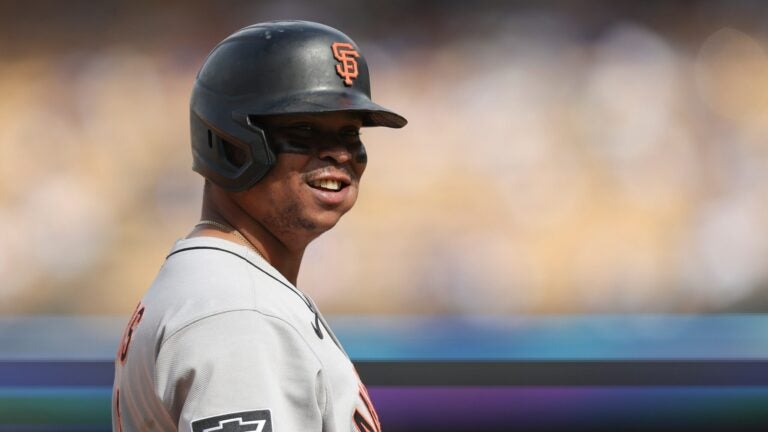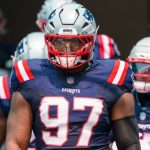Boston Red Sox
The Red Sox were able to make the playoffs without Rafael Devers, but their lineup could’ve used his power against the Yankees.

It’s pretty evident that the Red Sox missed Rafael Devers’s bat in their Wild Card Series loss to the Yankees.
Boston scored just six runs over the three-game set, getting shut out with the season on the line in Thursday’s Game 3. As a team, the Red Sox hit .198 in the series. Trevor Story’s homer in Game 2 served as the Red Sox’ only home run in the series, while the team only had four total extra-base hits (zero in Game 3).
But now that the season is over, let’s reflect on the trade that sent Devers to the Giants and see how much of an impact the trade made for the Red Sox.
Devers vs. Red Sox hitters
When the Red Sox traded Devers in June, he was in the midst of another All-Star season. The lefty hit .272 with a .905 OPS, 15 home runs, and 58 RBIs through the first 73 games of the season, playing in every game for the Red Sox up until that point.
In the 89 games after the Devers trade, the Red Sox definitely didn’t get the same amount of pop at designated hitter. Among the 12 players who started games at designated hitter, the Red Sox only hit 10 home runs at the position for the rest of the year. Among the four players who started at least 10 games at designated hitter, Roman Anthony was the only player to post a better batting average and OPS at DH than Devers did with the Red Sox this season. The rookie hit .324 with a .932 OPS and two homers over 18 games as their designated hitter.
In terms of Devers’s play after the trade, he struggled to adjust initially with San Francisco before finding his groove. He hit just .236 with the Giants this year, but he also hit 20 home runs in 90 games. That’s more home runs than any hitter on the Red Sox had from June 16 (when the trade was made) through the end of the season.
But prior to the deal, Devers was on pace for a 33-homer, 128-RBI season with the Red Sox. That meant he would’ve hit 18 home runs and 70 RBIs over the final 89 games, which would’ve been the most on the Red Sox over that span. On top of that, Devers’s .905 OPS with the Red Sox this season was a better OPS than any hitter on the team had following the trade in June.
The Red Sox’ run production after the trade (4.87 runs per game) was actually roughly the same as it was before the trade (4.84 runs per game). But they hit fewer homers after the trade (1.09 per game) than they did before it (1.22 per game), ranking 23rd in home runs hit from June 16 through the end of the season. The Red Sox’ OPS also fell from the sixth-best mark in the league before the trade (.750) to 11th after it (.741).
Of course, the injury to Anthony and Alex Bregman’s numbers trailing at the end of the season, as he returned from an extended absence, hurt the Red Sox’ offense. But having Devers would’ve helped keep Boston’s offense afloat. And that’s before taking into account Devers’s history against the Yankees, hitting 18 homers in 64 career games at Yankee Stadium.
How the players the Red Sox got in the trade did this season
If not having Devers’s bat was bad enough for the Red Sox, none of the players they got in the trade played in the Wild Card Series. Let’s take a player-by-player look at how each player the Red Sox got in the trade did following the trade this season.
Jordan Hicks: Hicks was the only true Major Leaguer the Red Sox got in the deal for Devers. The right-handed reliever largely struggled, though. He went 1-2 with a poor 8.20 ERA over 21 appearances, giving up 12 walks in 18 2/3 innings pitched. Hicks finished the season on the injured list, getting moved off the active roster after giving up four runs in 1/3 innings pitched on Sept. 3.
Kyle Harrison: Harrison was one of the two touted young players the Red Sox got in the deal for Devers, but he didn’t make too much of an impact in Boston. The lefty logged a 3.75 ERA over 12 starts for Triple-A Worcester, improving after a rough start. He was eventually called up in September, logging a 3.00 ERA in 12 innings pitched over three outings. That earned him a spot on the Red Sox’ postseason roster, but he was passed over for Connelly Early as a possible starter for Game 3.
James Tibbs: Tibbs was the other touted young player the Red Sox got in the deal for Devers, hitting .207 with a homer in 30 games with Double-A Portland. However, the Red Sox traded Tibbs to the Dodgers for Dustin May ahead of the trade deadline. May went 1-4 with a 5.40 ERA in six outings for the Red Sox before missing most of September due to injury. Tibbs, meanwhile, hit .269 with seven homers in 36 games with the Dodgers’ Double-A affiliate after the trade.
Jose Bello: The 20-year-old righty put up decent numbers in the Red Sox’ farm system this year. Bello had a 3.14 ERA in five Rookie Ball outings before posting a 3.09 ERA in seven outings with Single-A Salem. Bello also pitched 23 1/3 innings with Single-A Salem, making four starts.
Sign up for Red Sox updates⚾
Get breaking news and analysis delivered to your inbox during baseball season.



